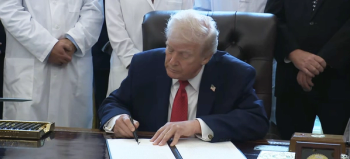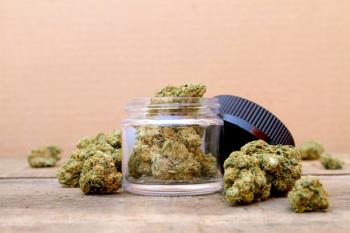
What to Expect with Product Recalls
In the cannabis industry there seems to be a misconception that your company will never have a recall in its lifetime, or that there isn’t any possibility it will ever happen to you. In reality, all cannabis companies experience at least one or multiple recalls during their lifetime. It isn’t about if it will happen, it’s more of a when. And when it happens, how will your company handle it?
Have you ever found a foreign object in your food, or woken up not feeling too good from the previous days’ food? Each year in the United States, 1 in 6 people get sick from foodborne disease, 128,000 are hospitalized, and 3000 on average die. In the United States, we have seen large recalls involving listeria in cantaloupes, salmonella in peanut butter, metal pieces in ground beef, and, more recently, cannabis recalls because of potentially unhealthy levels of molds, yeasts, pesticides, and heavy metals.
In the cannabis industry there seems to be a misconception that your company will never have a recall in its lifetime, or that there isn’t any possibility that it will ever happen to you. In reality, all wholesale food companies and cannabis companies experience at least one or multiple recalls during their lifetime. It isn’t about if it will happen, it’s more of a when. And when it happens, how will your company handle it? If your company is prepared and has good protocols in place, then you can prevent a recall or make it far less detrimental to the company if you happen to go through one.
In efforts to protect consumers, the Food and Drug Administration (FDA) as well as local and state regulatory authorities publish product recalls to notify consumers of confirmed and potentially contaminated products. The recall could stem from your own product or an outside manufacturer; think of in-house manufactured ingredients, out-of-house added ingredients, or primary packaging. What to expect from a recall may differ from state to state, but the overall process is similar to the FDA’s. We hope to clarify what to expect during a recall and how this can prepare you for dealing with this type of situation.
Keep in mind that a recall is not always your company’s fault, but that doesn’t mean that your company isn’t the one that has to deal with it or be the one announced in the press releases and bulletins when it does. We see this a lot when a company isn’t protecting itself by testing all products (yes, again) before using them in their products. This means all ingredients including cannabis products. As much as I hate to say it, certificates of analysis (CoAs) aren’t always telling you the truth, so we always recommend conducting your own third-party testing for new vendors for at least a few months before trusting CoAs. These kinds of precautions could save you millions down the line, even though there is a cost associated with extra testing.
We also see this when companies are using white labelers to create their products. If your company name is on the containers being recalled, then it's your brand that is affected negatively by it. Unfortunately, you don’t always have control of what is happening in a white label facility, so we highly recommend routine third-party food safety audits or making sure the company has current good manufacturing practices (cGMP) certification before engaging with them. You have to protect your brand at all costs, and be wary of taking someone’s word for being “compliant” or for being cGMP certified. Stating that you are “complaint” really doesn’t mean anything since there isn’t anyone checking to see if you are staying compliant with cGMP standards. If a company really is cGMP certified, they should be able to easily supply you with an actual, up-to-date certification. Please do not take anything at face value. I have seen the worst of it – ask for proof of everything.
The very early steps of a recall start with determining the need for a recall.You may conduct a voluntary recall on your own or you may receive a notification that your product is at fault, which could also lead to a recall. This could include a simple consumer complaint, consumer social media post, hospital visit, or worse…death. No matter the origin, your product could be the linking connection to the complaints.
Let’s say a regulatory authority notifies you that your product is the common source of illness. What is next? You must quickly identify which products are associated with the complaints. Maybe a common ingredient, common manufacturing date, equipment, staff, packaging material, or so on. You will need to be able to identify which products are included in the recall. Let us hope your traceability is on point! Having a strong product traceability program will expedite identifying which products need to be recalled and which consumers need to be notified. If traceability is not in place, the recall could expand past the identified product to include “any and all” products.
Once the product is identified, you must contact and notify any consumers, wholesalers, and distributors to whom the product was sold. This could include contact via phone call, mass email correspondence, social media posts, press releases, and the most profound is the FDA publishing the recall on a national level. Expect product returns, reimbursements, and disposals for the recalled product.
After publishing the recall and receiving returned product back, what’s next? An investigation must be conducted on the recalled product to determine the root cause for the incident. This root cause will help determine how to best move forward.Once investigated, a corrective action must take place. You may choose to rework the product or you may choose to dispose of the product. Either decision must be based on science and have a clear path of documentation. Adhering to a corrective action preventive action (CAPA) plan is key to correcting the impacted product and ensuring it doesn’t happen again.
You’re not done just yet; the next step is preventing this from occurring again. Understanding the root cause of the nonconforming product will reveal options for preventing a similar disruption in the future. Perhaps an ingredient was purchased from an unapproved supplier, a product failed testing or was not tested, equipment malfunctioned, sanitizer chemical was too concentrated, and so on. The list goes on and on.
A recall is never ideal, but you can control how smoothly a recall flows. Remember to work with your local or state government regulatory agencies when conducting a recall. Additionally, you can prepare for potential recalls by promoting current good manufacturing practices throughout the facility, utilizing an approved supplier program, applying a CAPA plan, consumer complaint and non-conforming operating procedures, and have a complete recall plan in place.
About the Author
Kim Stuck is the CEO and founder of Allay Consulting. Direct correspondence to:
Newsletter
Unlock the latest breakthroughs in cannabis science—subscribe now to get expert insights, research, and industry updates delivered to your inbox.




